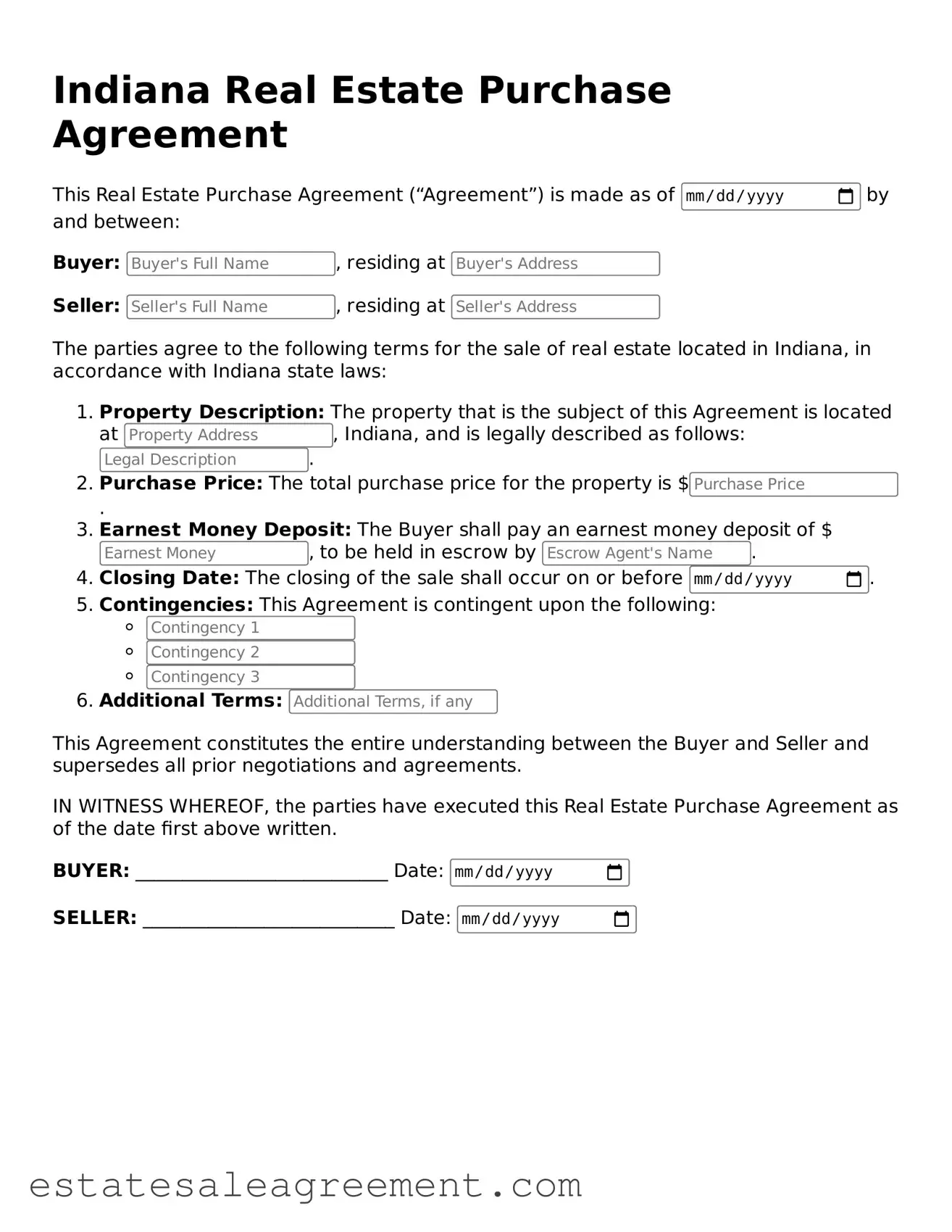What is the Indiana Real Estate Purchase Agreement form?
The Indiana Real Estate Purchase Agreement form is a legal document used in real estate transactions in Indiana. It outlines the terms and conditions under which a buyer agrees to purchase a property from a seller. This agreement includes details such as the purchase price, closing date, and any contingencies that must be met before the sale is finalized.
Who should use the Indiana Real Estate Purchase Agreement?
This form is intended for use by buyers and sellers of real estate in Indiana. Both parties should carefully review the agreement to ensure that it accurately reflects their understanding of the transaction. Real estate agents and attorneys often assist in this process to ensure all legal requirements are met.
What key elements are included in the agreement?
Key elements of the Indiana Real Estate Purchase Agreement include the names of the buyer and seller, a description of the property, the purchase price, payment terms, and any contingencies, such as financing or inspections. It may also specify closing costs and the timeline for the transaction.
Can the terms of the agreement be negotiated?
Yes, the terms of the Indiana Real Estate Purchase Agreement can be negotiated between the buyer and seller. Both parties have the opportunity to discuss and amend any terms before signing. It is advisable to document any changes to avoid misunderstandings later on.
What happens if one party breaches the agreement?
If one party fails to fulfill their obligations under the agreement, it may be considered a breach of contract. The non-breaching party may have several options, including seeking damages or specific performance, which means asking the court to enforce the agreement as written.
Is it necessary to have a lawyer review the agreement?
How is the agreement executed?
The Indiana Real Estate Purchase Agreement is executed when both the buyer and seller sign the document. Once signed, it becomes a legally binding contract. It is important for both parties to keep a copy for their records.
What should I do after signing the agreement?
After signing the Indiana Real Estate Purchase Agreement, both parties should ensure that any contingencies are addressed and fulfilled. This may include obtaining financing, completing inspections, or other requirements. It is also important to prepare for the closing process, which will finalize the sale.
